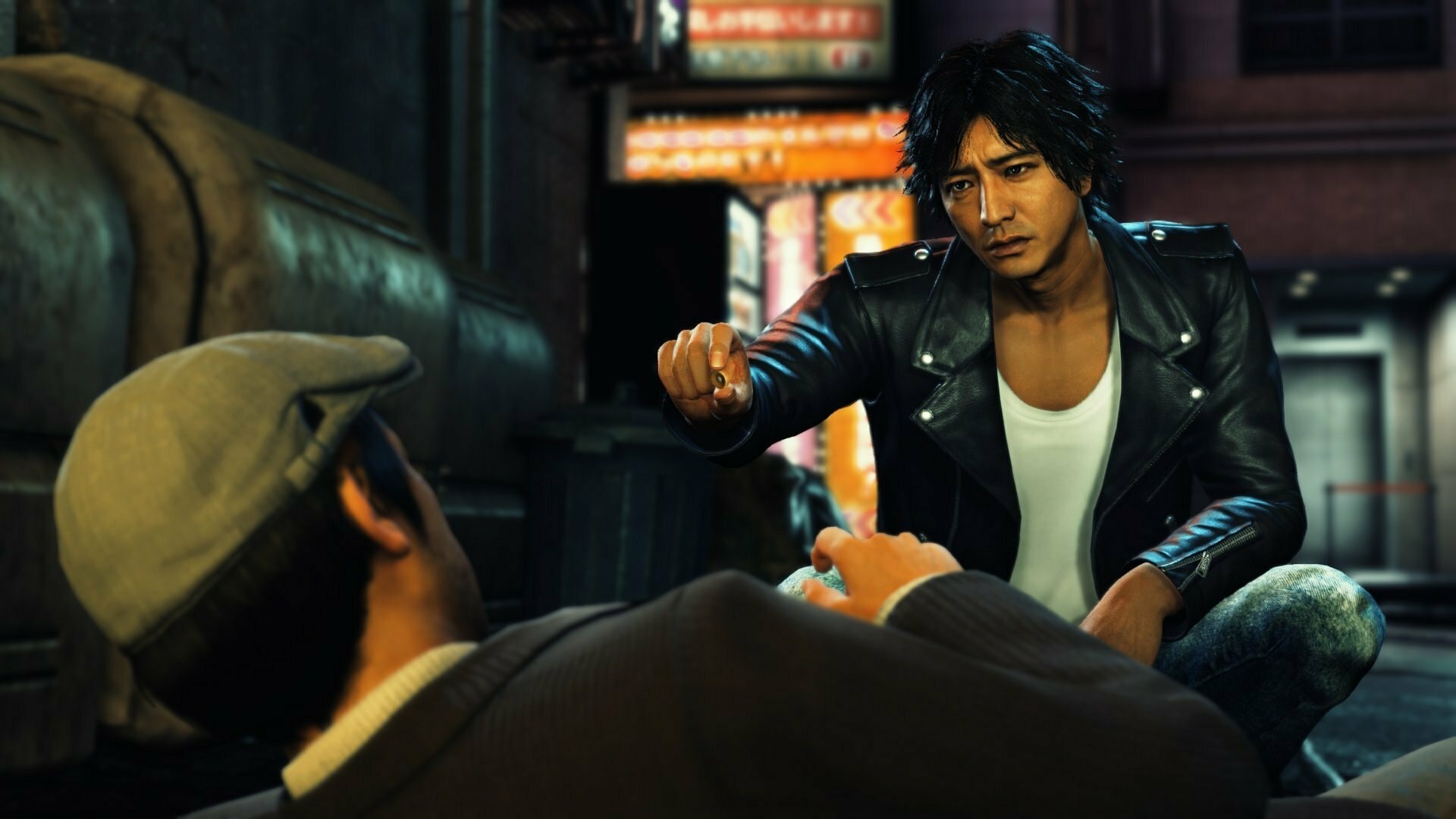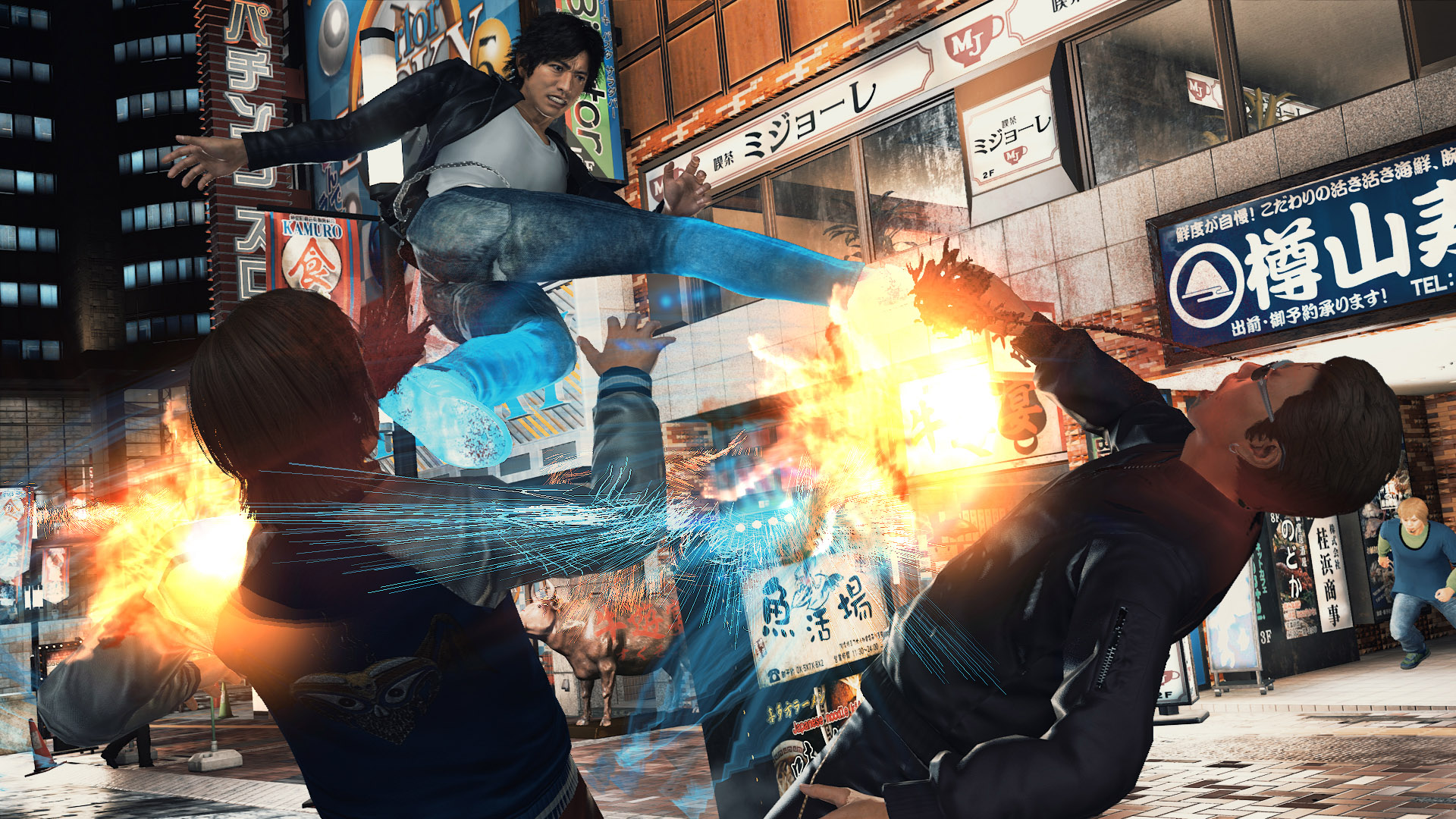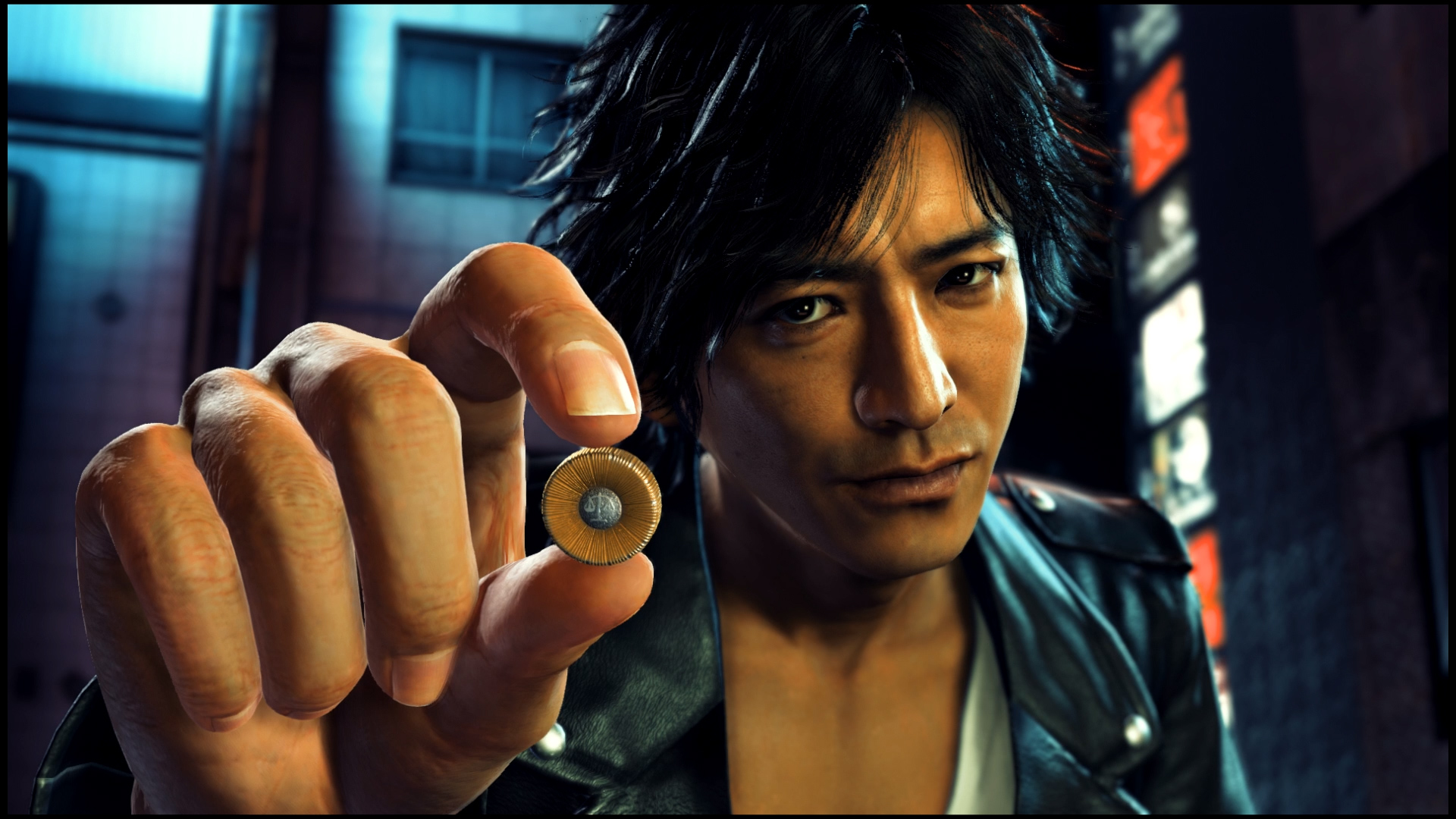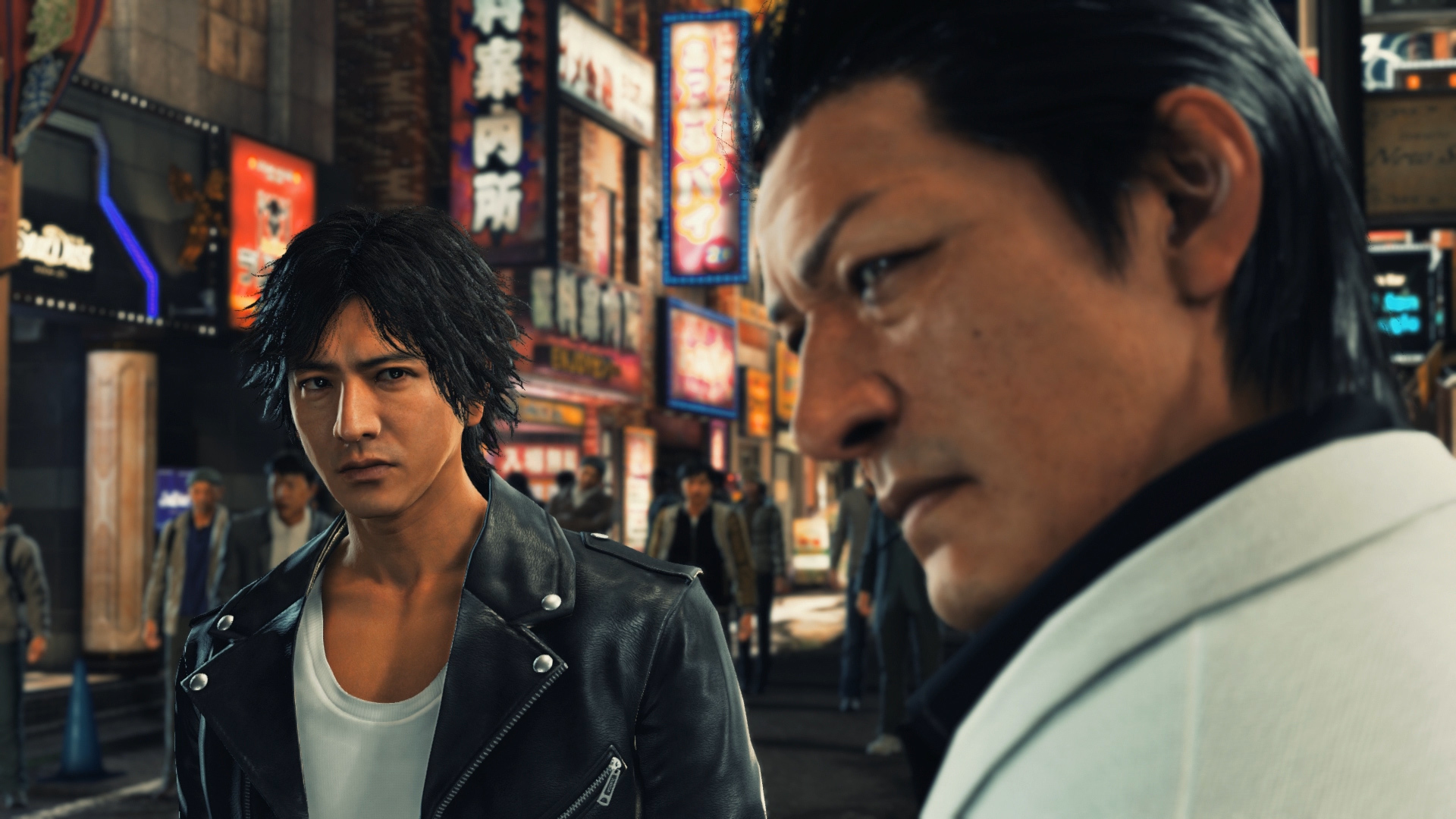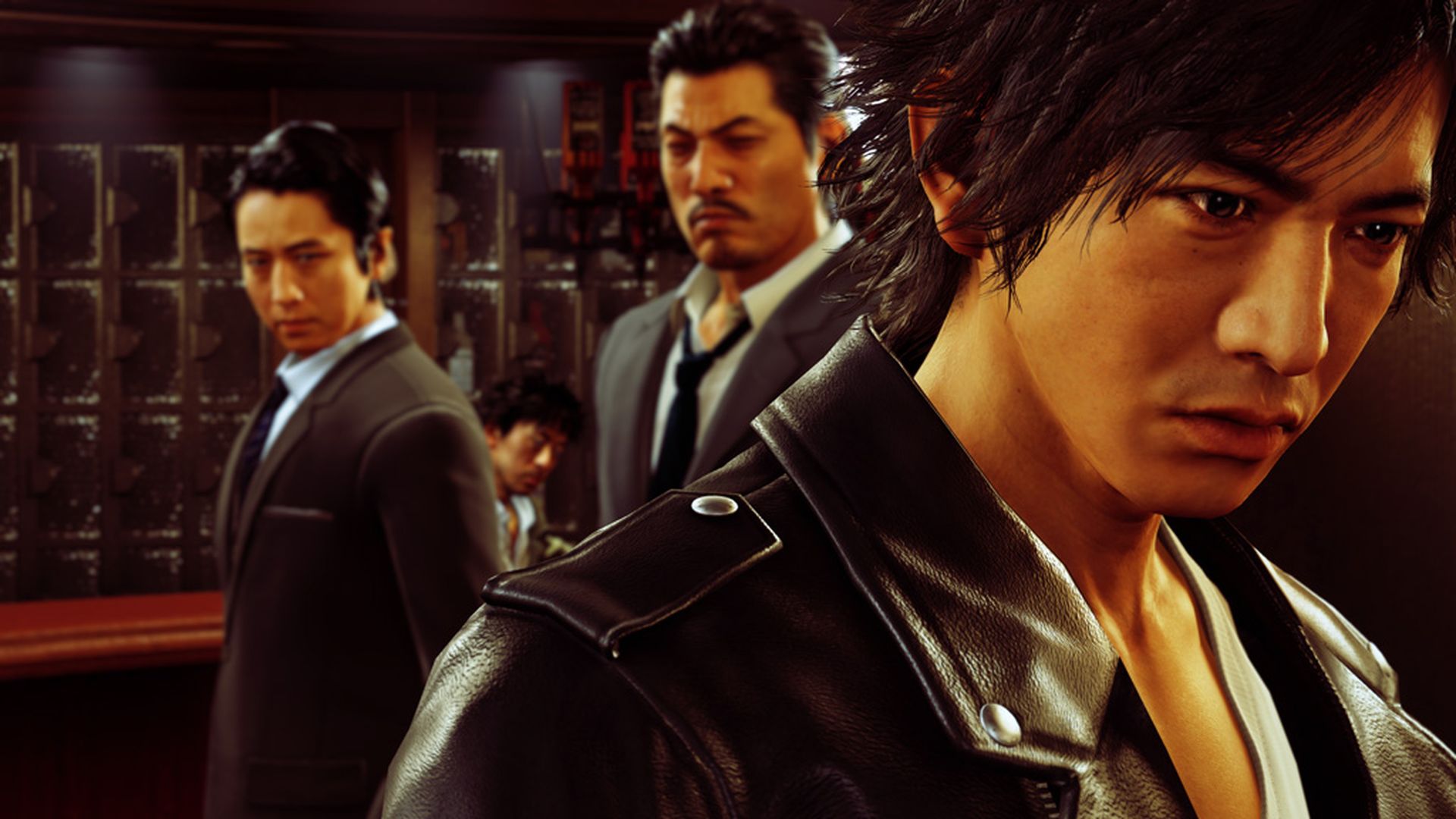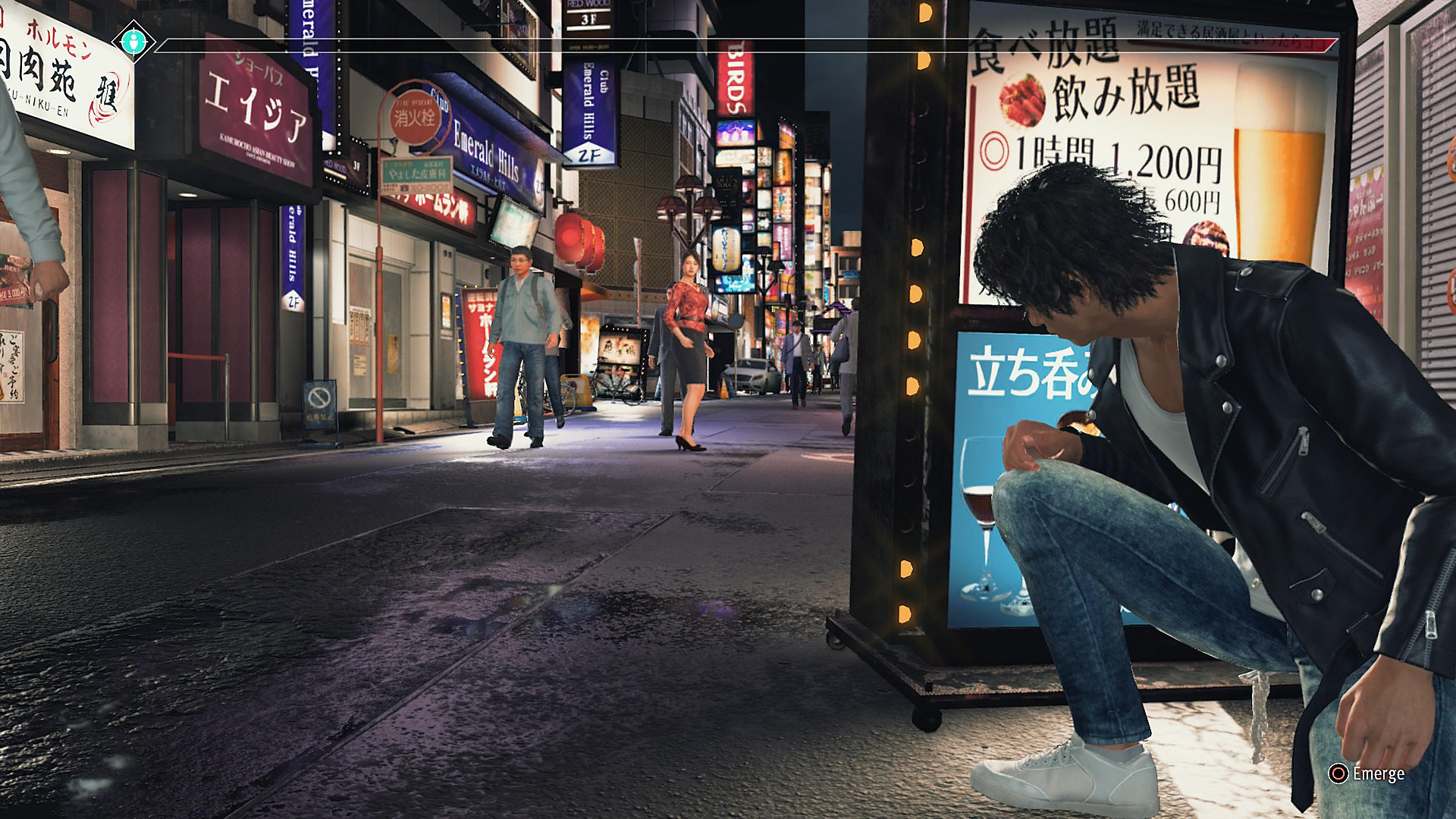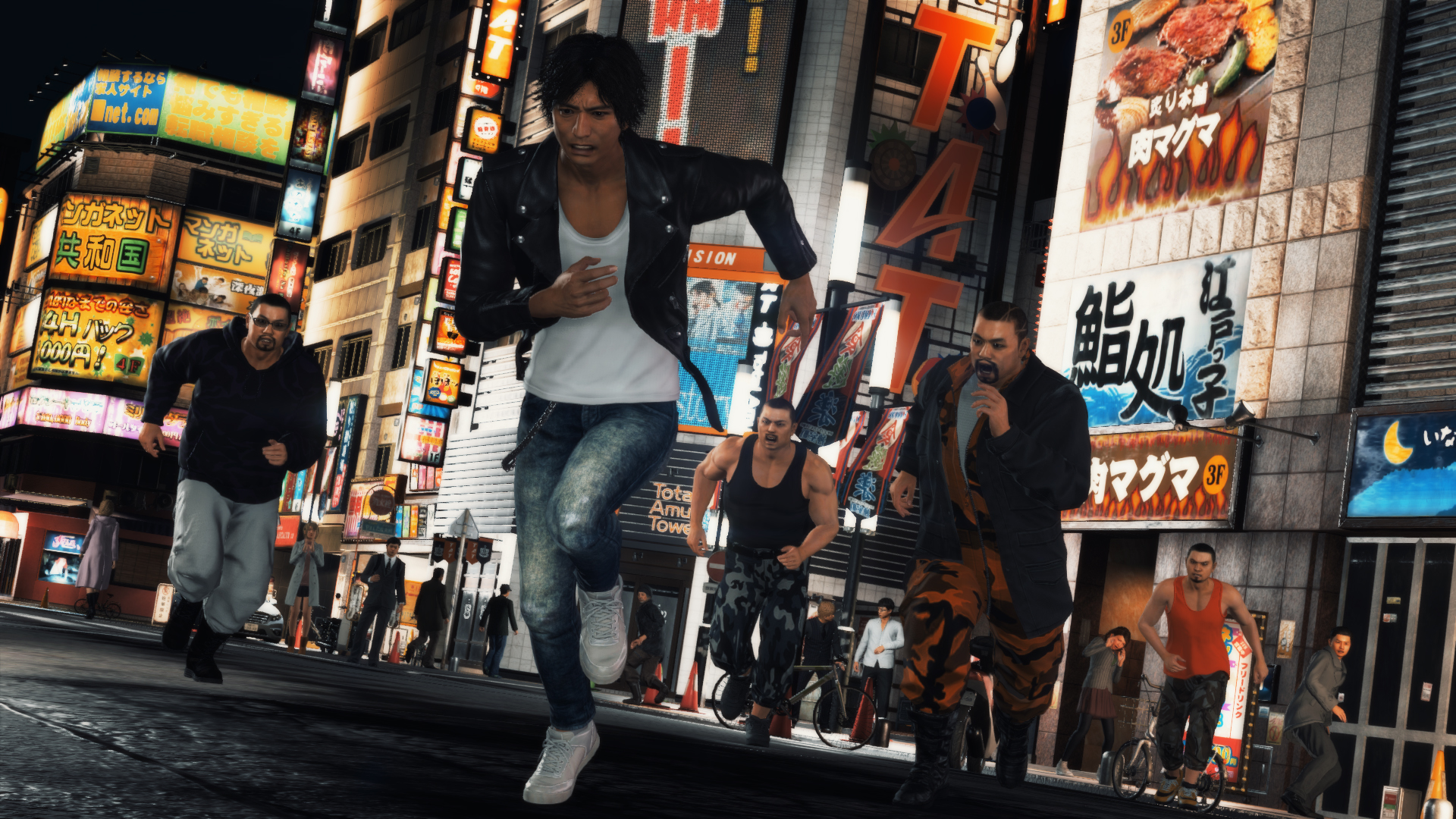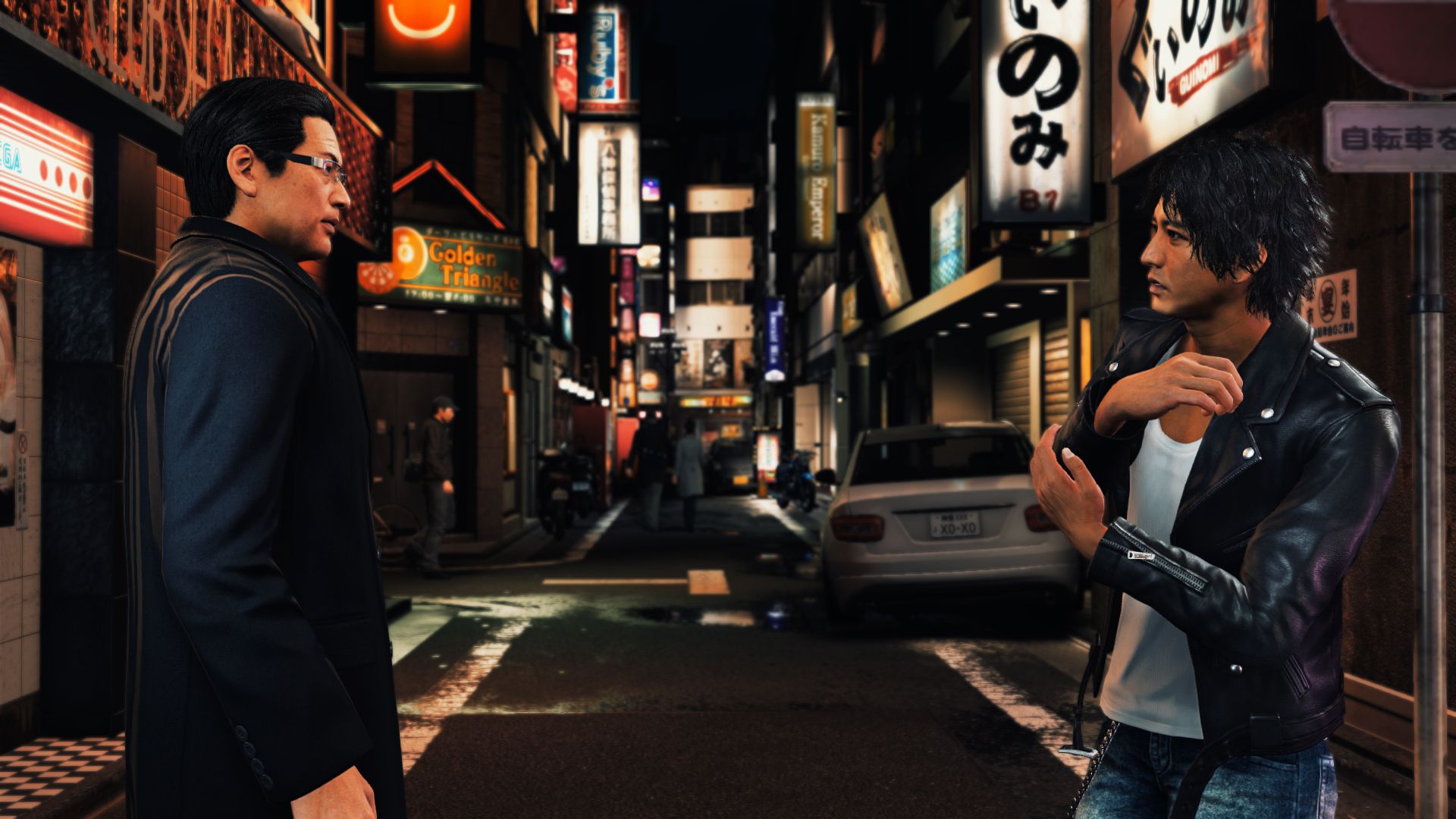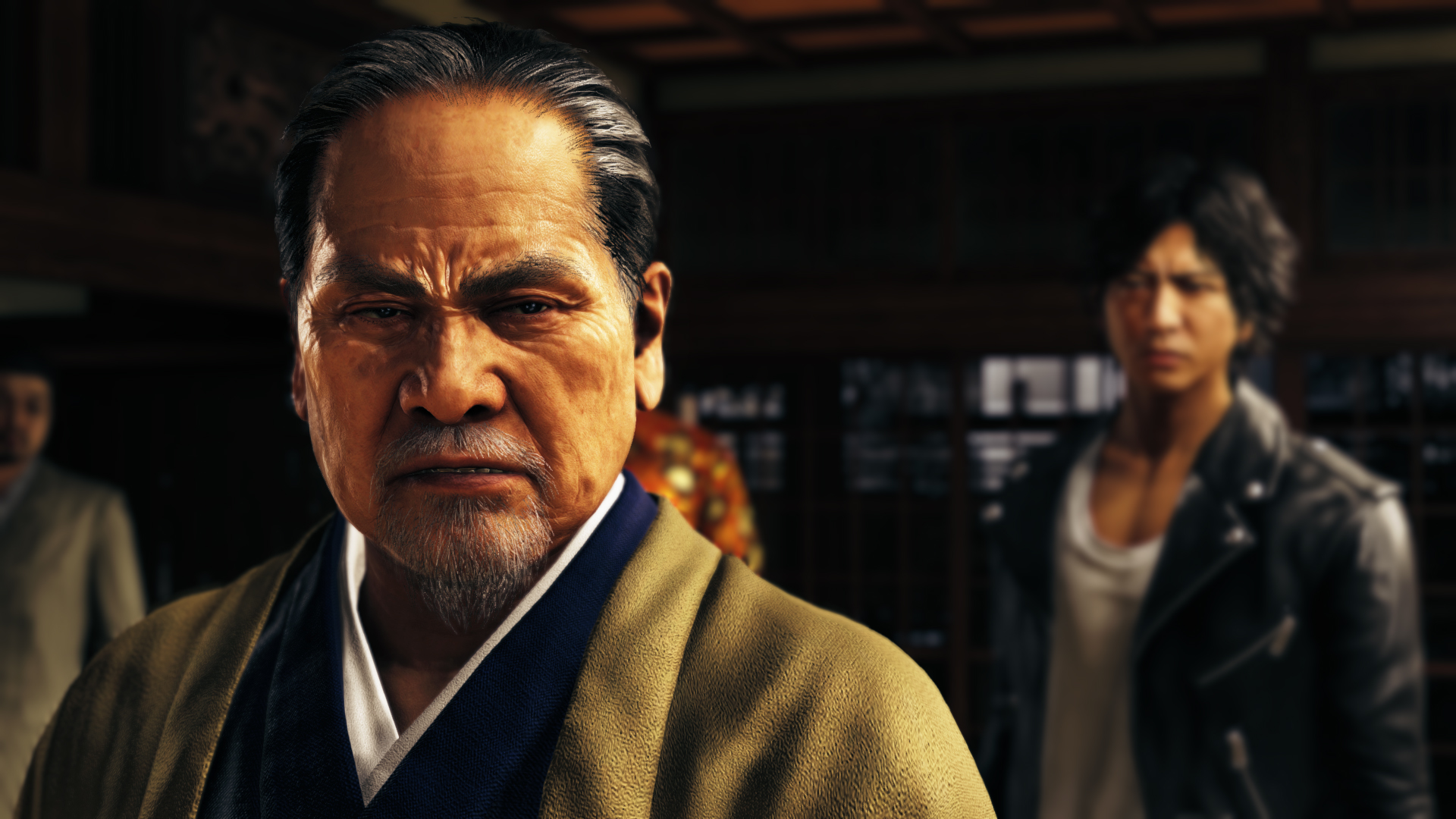
The Yakuza games have always been a bit slow on the uptake when it comes to tech and, despite its unusually vague title, Judgement is most definitely a Yakuza game, though you’re playing on the other side of the law this time. Personally, I dipped my toes into the series fairly late, having picked up Yakuza 0 a month ago. While the storyline, the quirky character interactions, and the sense of place—basically everything that makes Yakuza games so incredible—were present, it was evident that this was essentially a seventh-gen with higher-res textures—and not even a particularly ambitious seventh-gen title at that.
From a visual perspective, Yakuza 0 arguably fares poorly even compared to 2012’s Sleeping Dogs. Ryu ga Gotoku was among the last studios releasing new titles for the PS3. Yakuza Kiwami, came out on the ageing console as late as 2016. It was only with Yakuza 6 and Kiwami 2 that the Sega studio moved on to newer tech. The much-hyped Dragon Engine powered these two games and the game we’re looking at today, Judgement runs on an enhanced version of it. How does Judgement fare technically against Yakuza Kiwami 2? How does it compare to other open-world eighth-gen titles? Let’s find out.
Dragon Engine Overview
After playing Judgement on the Dragon Engine, it’s hard to go back to the older titles. To be perfectly frank, Yakuza 0 and Yakuza Kiwami look a bit outdated. There are significant visual differences between the PS3 version and the PC/PS4 editions of Yakuza 0. Most noticeable is the smooth 60 FPS update on the newer platforms. On PC, an RX 580 makes easy work of Yakuza 0 at 1440p, and even delivers playable framerates at 4K. Moreover, texture work has been completely redone to make use of the larger VRAM buffers on the newer platforms. Textures are exceptionally detailed and fine, high-frequency details, such as skin pores, are clearly visible on higher resolution displays.
Cutscene models are also reasonably detailed. Lower polygon counts are compensated for by animations that are—well inconsistent—some cutscenes showcase incredibly emotive facial performances while others don’t even have voice acting. Overall, though, the high-res textures and relatively detailed character models result in a reasonable presentation. Almost every other aspect of the game makes its seventh-gen origins painfully evident. Outside of cutscenes, character models are woefully undetailed. Physics is poorly implemented and passers-by react with simple, canned animations, a far cry from what even 2008’s GTA IV accomplished. Buildings and cars feature low polygon counts and the open world setting is quite cramped, even by seventh-gen standards. Yakuza 0 and the first Yakuza Kiwami are most definitely seventh-gen games spruced up for newer platforms. The 60 FPS update certainly helped things but it was impossible to miss the compromises involved when playing a seventh-gen game in 2019.
The Dragon Engine is a different matter entirely. Debuting in 2016’s Yakuza 6 (A PS4 exclusive), the engine introduced modern features such as a physically-based material rendering system, deferred lighting, and a new physics implementation. Yakuza Kiwami 2 was also built on the Dragon Engine, dialling things up a notch from Yakuza 6. This was a true generational leap. It also required significantly faster hardware. While midrange comfortably ran Yakuza 0 and Kiwami 1 at 1440p/60, you need a 2080 Ti just to make sure that minimum framerate stays above 60 FPS in Kiwami 2.
While arriving late to the eighth-gen party, the Dragon Engine features a whole raft of improvements that, together, put the newest Yakuza games—and Judgement on even footing with your typical eighth-gen open world title.
For starters, the Dragon Engine features physically-based material rendering. So much of Yakuza’s atmosphere stems from the almost palpable texture of surfaces—roadside puddles, clothing, worn concrete. Materials are rendered much more convincingly in Judgement and the Dragon Engine titles than in previous Yakuza games. Metallic surfaces reflect light realistically, wet pavement exudes palpability—enhanced material rendering does wonders for atmosphere here.
Another key Dragon Engine feature is the reworked lighting model. A deferred model is now used, with a large number of shadow-casting lights. Earlier games in the series made effective use of coloured light-sources to convey atmosphere, but without the static lighting model meant that things always felt just a little flat.
Skin rendering is very important in Yakuza series games, if only because the camera spends so much time zoomed up close on character faces. The Dragon Engine makes use of subsurface scattering and in the newer games, this works to great effect: the detailed skin texture work is greatly complemented by the subsurface scattering shader, with the result being detailed, yet realistically supple skin.
Screen-space reflections also make an appearance and, again, add substantially to the thick atmosphere in night-time scenes.
Lastly, the Dragon engine makes a significant leap forward in an area where previous games were behind the curve: physics. Yakuza 0 and the original Kiwami featured a physics model that was rudimentary at best. Ragdoll wasn’t applied to NPCs—the earlier games instead relied on canned animations. If these worked well, things would’ve been tolerable, but poor animation blending meant that there was noticeable choppiness between, say, a pedestrians walking animation, and their “dodge” animation when Kiryu hurtles past them. In the Dragon Engine, ragdoll physics are finally implemented and lend the combat a much-needed sense of heft. NPCs crumple, and incidental objects in the scene interact realistically with each other and characters—environmental attacks were present in the earlier titles, but, again, they were presented using canned animations.
The combined effect of the new visual set is at times a bit too much for base PS4 hardware to handle. Yakuza 6 and Kiwami 2 are plagued by performance issues. The base platform has trouble maintaining a lock on 30 FPS—this is particularly noticeable during fight scenes.
In Judgement, we see a further refinement of the engine. As a late-generation title, Judgment pushes base PS4 hardware hard and the compromises are hard to miss. Similar to Kiwami 2, we’re dealing with a sub-native framebuffer on base PS4, bumped up to just 1080p on Pro. Considering how the Pro was designed with 4K output in mind, it’s disappointing that we’ve reached the point where Pro hardware is needed just to hit 1080p. We’re guessing that this exact scenario will play out next year during the cross-gen period: Pro and Xbox One X will become the base 1080p platforms for a while.
Judgement features the same core Dragon Engine feature set, with physically-based material rendering, a deferred lighting setup, and higher quality shader work. Let’s have a look now at how its visual set compares to Yakuza Kiwami 2.
Character Models
Characters were already very detailed in Yakuza 6 and Yakuza Kiwami 2. Judgment doesn’t take major steps forward in the model quality department. This isn’t necessarily a bad thing. In-engine models are very high fidelity—while poly counts aren’t quite up there with the best of this generation, the models are a noticeable step up from pre Dragon-Engine Yakuza titles. Details like Takayuki’s zipper are fully modelled instead of being represented by textures. The high quality of the models together with quality facial animations lead to very emotive cutscenes—it’s interesting to note that even in games that are technically superior to Judgment—poor facial animation quality can completely break immersion.
Secondary characters are much rougher around the edges, though. NPC poly counts are a good deal lower than those for main characters and it even appears as if they may be using lower-grade textures for skin and clothing. Nevertheless, subsurface scattering and the enhanced material rendering model pull their weight here and allow secondary NPCs to, at least, not look obviously out of place.
Lighting Tech
Lighting is an area where the Dragon Engine takes things far beyond what was possible in the last-gen Yakuza outings. The deferred lighting model from Kiwami 2 makes a return in Judgement and, even though the performance and image quality impact are noticeable, we think these are a worthwhile tradeoff for the level of dynamism that the new lighting model introduces to streets of Kamurocho. In earlier titles, a standard forward rendering approach was used. This allowed for only a handful of lights to actually cast shadows. This looked particularly jarring during night scenes where a large number of lightsources are visible—neon signs, street lighting, traffic lights—but only a handful actually cast shadows. The deferred rendering approach implemented in Judgment allows for lighting that’s far more dynamic and better captures the interplay of light and shadow. Furthermore, indirect lighting makes the cut this time around—coloured lighting from street signs bleeds onto other surfaces and reflects from puddles.
Animations
Character animations are a strong point for Judgment, even in comparison with contemporary eighth-gen titles. Facial animation in particular is extremely emotive in close-up cutscenes. Higher polygon counts allow for more complex character rigging—with more muscles and bones and factored in—to convey a wider range of emotions. Shades of emotion—from contempt to anger to disgust—are conveyed effectively and actually look different during cutscenes. During gameplay, animations are noticeably rougher but, together, with the new ragdoll physics implementation, things look just as good as they did in Kiwami 2 and a lot better than they did in Yakuza 0 or the original Kiwami.
The most noticeable improvement to gameplay animation is that character animations now blend better than they used to. One of the most off-putting aspects of NPC behaviour in the earlier Yakuza games was how NPCs would suddenly transition from one animation set to another: If you ran into pedestrians, they jarringly transition from their walk animation to their dodge before just as abruptly returning to the walk animation. Blending, as implemented in Judgement allows for much smoother transitions and makes pedestrian encounters feel less scripted. We’re not talking about GTA Euphoria-level interactions, but at the very least, pedestrians in Judgment don’t feel as artificial as they did in the pre-Dragon Engine games.
Cutscene Quality
Overall, Judgment is a fairly average-looking PS4 game. There are better-looking titles out there that also run far better. The one area where Judgment stands out, though is in terms of cutscene quality. This is true for Yakuza games (and their spinoffs). Cutscene models are of a significantly higher quality than their in-game counterparts. Texture work receives a boost as well during cutscenes, though this is likely down to optimisation for the limited VRAM pools on the Pro and the base PS4. (Case in point, the PC version of Yakuza 0 has a mod that allows you to enable cutscene textures during gameplay). And, as we’ve mentioned before, cutscene animation quality is stellar. Facial rigging captures subtle nuances of expression here that were simply not possible in the earlier games. It’s evident that much of Judgment’s budget went towards getting cutscene animation just right because the cutscenes here put technically accomplished games to shame. This reminds us a lot of the original Mass Effect, where just about everything looked like a muddy mess, except for the fantastic cutscene work.
Base PS4 versus PS4 Pro
Eighth-gen hardware is being pushed as hard as it can be with Judgment, and it most definitely shows. Image quality takes a hit in the PS4 version of the game thanks to a 900p framebuffer. This stands in sharp contrast to the pristine 1080p presentation of Yakuza Kiwami and Yakuza 0. Overall, there is feature parity between the base PS4 and PS4 Pro versions of the game in terms of visual makeup. The resolution gap is significant, but apart from minor differences in shadow culling and indirect lighting fidelity, we’re hard-pressed to spot differences between the two. Both make use of a post-process anti-aliasing solution. On the base hardware, this introduces more noticeable shimmering artefacts, particularly on hair, thanks to the lower resolution framebuffer.
The most noticeable difference between the two versions of the game is in terms of performance. We analyzed the game’s performance by taking some sample scenes from the game and running it through trdrop, an open source software. Note that this tool gives us a mere demonstration of the game’s performance, because an exact 1:1 representation of performance can only be provided by the developers themselves since they have access to vast of array of tools and profilers. Performance is a bit of a mess on the base PS4 and it’s evident that CPU bottlenecking is responsible for the sorry state of things.
During fight scenes, the base console simply cannot deliver a steady 30 FPS experience. 1 percent minimums drop as low as 23 FPS while the overall framerate chugs at a sub-30 FPS update for extended periods of time. Performance worsens as more NPCS are visible onscreen, pointing clearly towards a CPU bottleneck. In a game like Judgment with extended combat scenes, the low framerate just makes the gameplay experience unpleasant. Input lag is high and, together with the rejigged animation system (which, ironically, slows down combat moves somewhat), it often becomes difficult just to control Takayuki.
In contrast, the Pro makes a much better attempt at maintaining a framerate that at least approximates 30 FPS. We see dips to the 28 FPS range occasionally in the heat of combat, but generally Sony’s premium console manages to maintain its target framerate. This is likely down to two factors: The framerate slowdown on the base PS4 was most evident during NPC-heavy scenes. The Pro’s faster processor could be helping to address the bottleneck somewhat—just as we see in AC: Unity, where Pro and One X were noticeably better at maintain the target framerate. And unlike the base PS4, the Pro isn’t likely to be GPU-bound at 1080p. In the PC space, the R9 380, the card that’s closest to the Pro in performance, runs the game at over 35 FPS, maxed out.
Post-processing
Judgment’s extensive post-process pipeline is in full force during cutscenes with a heavy emphasis on shallow depth of field and bloom. While we’re ordinary not fans of this kind of “overproduced” look, it actually works in Judgment’s favor and adds emphasis to emotional scenes. Motion blur in Judgment is interesting: camera-based blur is present and quite evident when moving the camera around. This does help perceptually smooth out the uneven framerate on the base PS4. However, per-object blur doesn’t show up: panning the camera is smooth but combat animations only serve to highlight the low framerate, not mask it.
World Design and Streaming
Ryu ga Gotoku has always placed an emphasis on quality over quantity in its open world’s. The closest analogy we can think of is 2K Czech’s approach to worldbuilding in the Mafia series: dense open worlds meant to propel the story forward rather than serving as playgrounds of destruction (a side note: the original Mercenaries game was ACTUALLY subtitled “Playground of Destruction.”) Size-wise, Judgment’s world is limited even by Yakuza standards. Kamurocho is the only explorable locale and if you’re used to the likes of GTA V or Just Cause 4, things are going to feel pretty cramped. Nevertheless, the setting absolutely oozes atmosphere. Moreover, the range of side activities to engage in blend well with the environment and make you feel like you’re in a place and not a set.
Because of its unambitious scale, Judgment doesn’t have to rely much on world streaming tricks. Object and shadow Loads are reasonable and NPCs remain visible for quite some distance. Because there are few truly open areas, most objects and NPCs are compartmentalized: the game doesn’t have to deal with objects on the next street over because they’re obscured by buildings and can be culled. There is a certain degree of pop-in and this is more noticeable on the base PS4 version. However, it’s not a deal-breaker and nowhere near as much a problem as the poor performance.
Physics
Physics were a notable weak point for earlier Yakuza games. Plenty of seventh-gen titles a good deal older than Yakuza 0 made good use of ragdoll physics. GTA IV took things further with its Euphoria middleware. Thankfully, the use of the Dragon Engine means that Judgment has passable physics, at least. Ragdoll adds heft to combat, as enemies and objects are thrown about by your actions. It also leads to more convincing takedowns–enemies don’t jarring transition to a death animation–they crumple like you’d expect them to. Judgment features Yakuza’s signature environmental combat and ragdoll just makes everything more interesting when you’re going to town on a group of NPCs with a sofa.
Post processing
Judgment features heavy use of post processing. We’re not ordinarily fans of a depth of field and bloom-heavy look but it works well here, particularly when underscoring the emotion depth of cutscenes. The deferred lighting model also means that anti-aliasing is handled in the post-processing. We see what looks like a fairly basic FXAA implementation. Transparencies receive coverage but there’s a lot of shimmering–particularly on the base PS4 version. Ambient occlusion also makes the cut and adds much-needed depth to street corners in night scenes.
Conclusion
Judgment is a Yakuza game in all but name. While you don’t get to play as Kiryu-san, you end up doing just about everything he would in a regular Yakuza game, even if that flies in the face of being a detective. The core Dragon Engine visual package–the deferred lighting, enhanced materials and shaders–all make the cut and in more refined form than in Yakuza Kiwami 2. We’re interested to see how a PC version of this would play.









